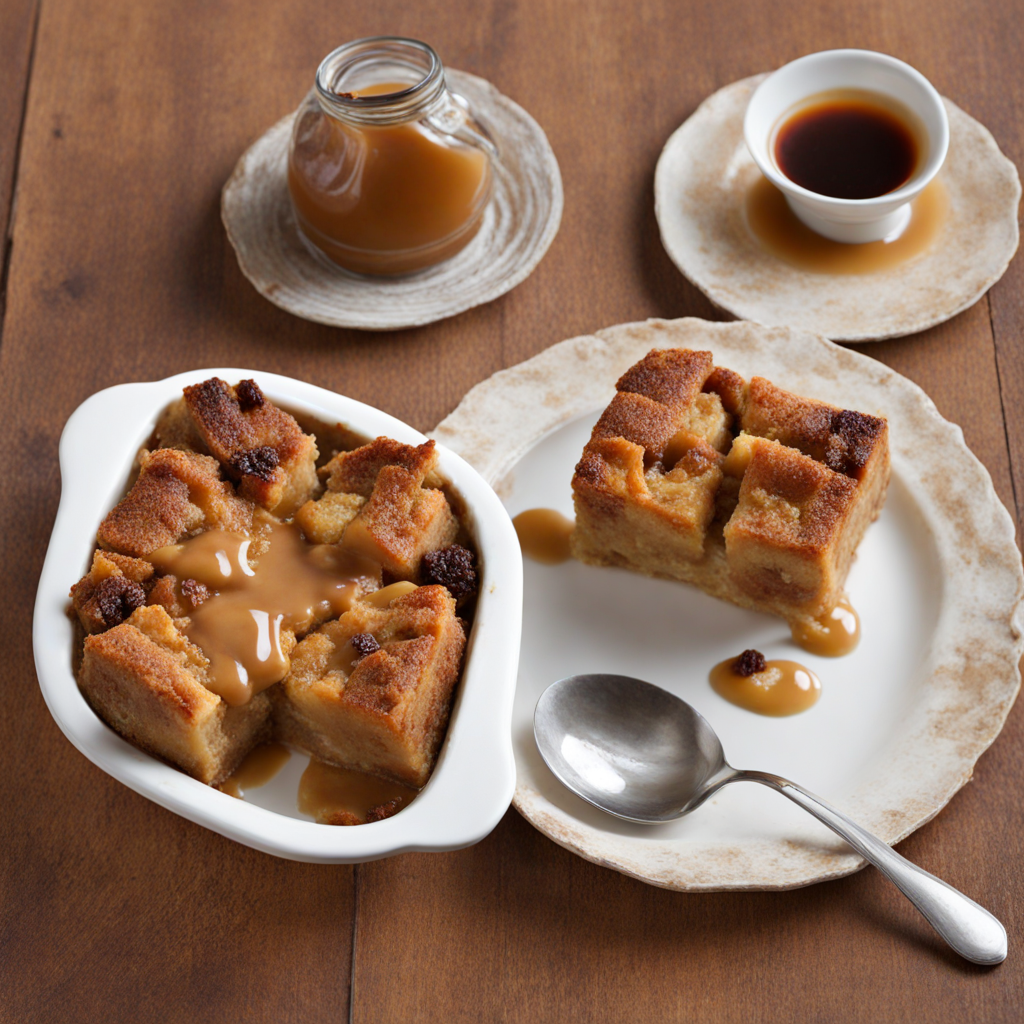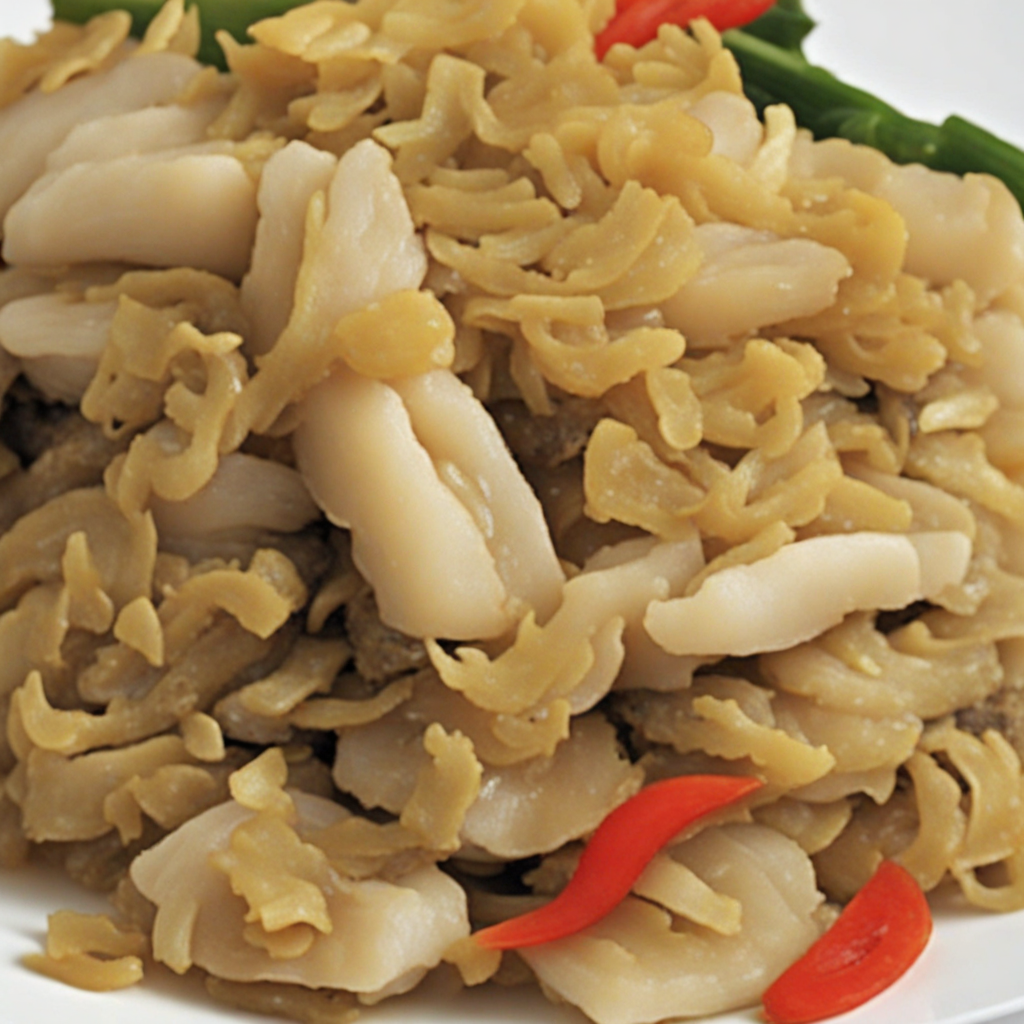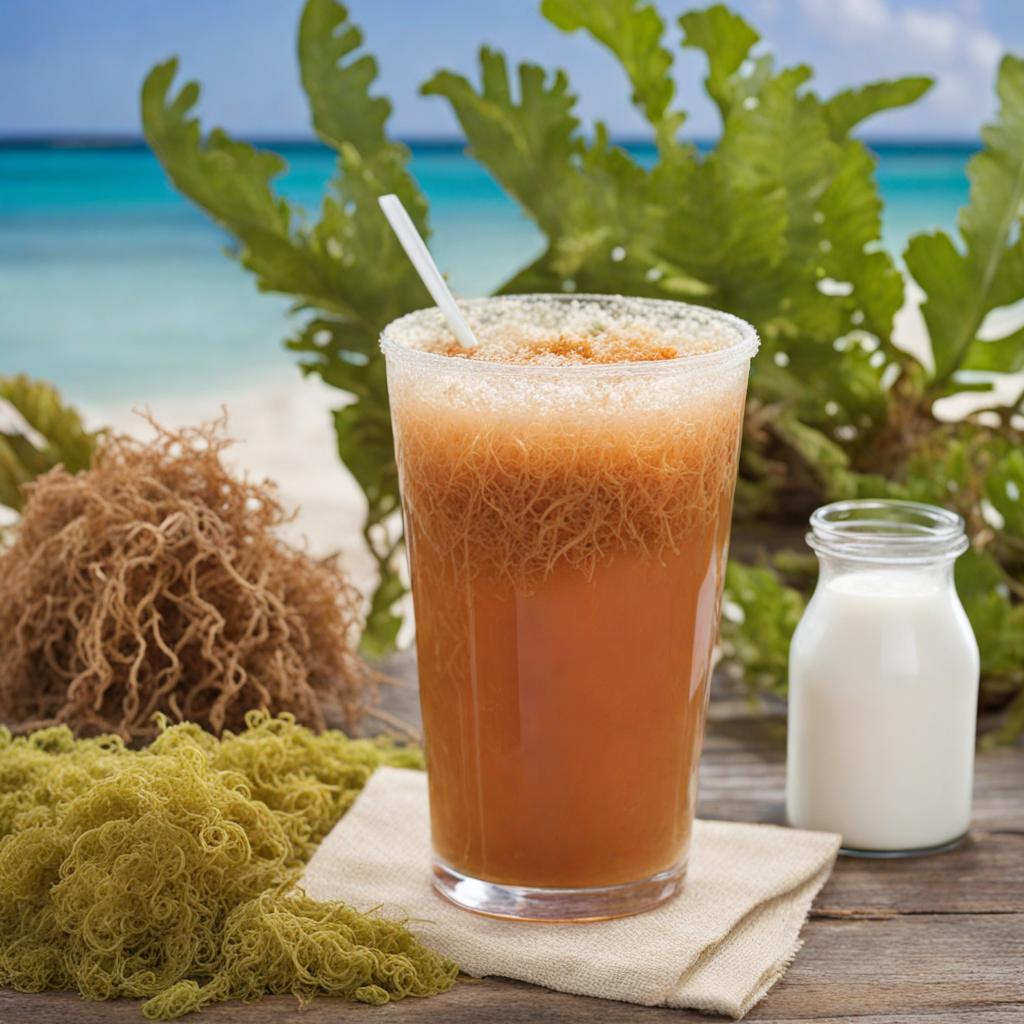Bread Pudding
Bread pudding from Antigua and Barbuda is a delightful dessert that showcases the island's rich culinary heritage. This comforting dish is traditionally made from stale bread, which is soaked in a mixture of milk, eggs, sugar, and spices. The use of local ingredients, such as coconut milk and rum, adds a unique twist to the recipe, infusing it with tropical flavors that evoke the essence of the Caribbean. The pudding is typically baked until golden brown, resulting in a warm, custard-like texture that melts in your mouth and offers a symphony of sweet and savory notes.
How It Became This Dish
Origin of Bread Pudding Bread pudding is a delightful dessert that has found a unique place in the culinary repertoire of Antigua and Barbuda, two islands in the Caribbean known for their rich history and diverse cultural influences. The origins of bread pudding can be traced back to Europe, particularly in the British Isles, where it was created as a means to use up stale bread. The concept of repurposing leftover bread into a soft, sweet dish is thought to have emerged in the Middle Ages, where frugality and resourcefulness were essential in the kitchen. As European settlers, particularly the British, colonized the Caribbean, they brought their culinary traditions with them. Over time, these traditions mingled with local ingredients and cooking methods, giving rise to a distinctly Caribbean version of bread pudding. In Antigua and Barbuda, this dessert evolved not just as a way of minimizing waste but as a staple that reflects the islands' agricultural bounty, including locally grown fruits and spices. Cultural Significance In Antigua and Barbuda, bread pudding is more than just a dessert; it is a symbol of community and familial bonding. Traditionally served at gatherings and festive occasions, bread pudding has become a beloved comfort food that evokes memories of family recipes passed down through generations. The preparation of this dish often involves collaboration among family members, turning it into a shared experience that strengthens familial ties. The pudding is typically enriched with ingredients like coconut, raisins, and spices such as cinnamon and nutmeg, which are all abundant in the Caribbean. These ingredients not only enhance the flavor but also reflect the islands' cultural identity, showcasing the fusion of African, European, and Indigenous culinary traditions. Events like weddings, holidays, and community feasts often feature bread pudding as a highlight, symbolizing abundance and togetherness. Development Over Time As the centuries progressed, the recipe for bread pudding in Antigua and Barbuda underwent various transformations. The availability of new ingredients, such as sweetened condensed milk and various types of rum, introduced exciting variations to the traditional dish. Some modern interpretations include the addition of tropical fruits like bananas and mangoes, which lend a unique Caribbean flair to the classic recipe. In contemporary Antiguan cuisine, bread pudding is often served warm, drizzled with a rich rum sauce or custard, adding to the indulgence of the dessert. The use of local rum not only enhances the flavor but also pays homage to the islands’ renowned rum production, a significant aspect of the Caribbean culture. This blend of tradition and innovation has allowed bread pudding to remain relevant, appealing to both locals and tourists alike who seek an authentic taste of Antiguan hospitality. Regional Variations While bread pudding is enjoyed across the Caribbean, each island boasts its own variations that incorporate local ingredients and flavors. In Antigua and Barbuda, the pudding is often denser than its counterparts, thanks to the use of day-old bread soaked in a rich custard mixture. The addition of spices such as vanilla, allspice, and even local herbs creates a unique flavor profile that distinguishes it from other Caribbean versions. In comparison, other islands may employ different types of bread or adjust the sweetness and texture of their pudding. For instance, in Trinidad, bread pudding might include a blend of sweet and savory elements, reflecting a different cultural palate. This regional diversity showcases the adaptability of bread pudding as a dish that can evolve while maintaining its core identity as a comforting and resourceful dessert. Modern-Day Popularity Today, bread pudding remains an integral part of Antiguan cuisine, enjoyed by locals and visitors alike. Its popularity has been bolstered by tourism, with many restaurants and hotels serving their own interpretations of the dish. Chefs in Antigua and Barbuda often experiment with the traditional recipe, incorporating contemporary culinary techniques and plating styles while staying true to the flavors that locals cherish. Culinary festivals and competitions frequently feature bread pudding, highlighting the creativity and skill of local chefs. These events not only celebrate the dish but also serve to educate younger generations about their culinary heritage. In this way, bread pudding continues to thrive, evolving yet remaining rooted in the rich traditions of Antigua and Barbuda. Conclusion In summary, bread pudding in Antigua and Barbuda is a testament to the islands' rich culinary history and cultural significance. It is a dish born out of necessity and creativity, transforming stale bread into a beloved dessert that celebrates local ingredients and communal bonds. As it continues to evolve, bread pudding remains a delicious embodiment of the islands' heritage, a sweet reminder of the past that enriches the present and future of Antiguan cuisine.
You may like
Discover local flavors from Antigua And Barbuda







